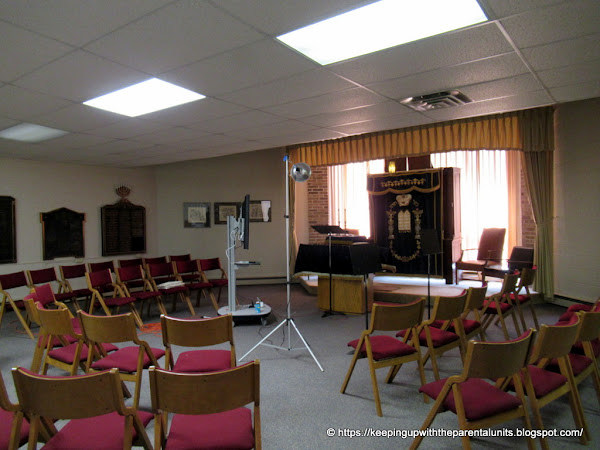On our trip last winter, we tried to spend a Shabbos every few weeks in a Jewish community and enjoyed learning about the community and meeting the people. Due to Covid, that can’t happen this year, but we still wanted to learn about some of the Jewish communities in Iowa, particularly since Lill’s great-grandfather was a shochet in Council Bluffs, Iowa in about 1895. We are not going that far west in Iowa on this trip, but we did visit the shuls in Cedar Rapids and Iowa City.
Cedar Rapids:
Cedar Rapids’ Jewish community dates back to 1895, when several families who had emigrated from Poland and Russia, established a Jewish cemetery. Next, they hired a shochet, and then in 1906, they founded the Beth Jacob synagogue, an Orthodox congregation. In 1922, some of the younger members broke away and founded the Reform Temple Judah. However, in 1949, the two congregations agreed to merge and combine their religious schools using Temple Judah’s building. They now have Reform services on Friday nights and a "Traditional" service one Shabbos morning a month. In 1964, they moved to their current building which we visited. We were given a tour by their Treasurer, Michael Heeren, who has been using the shul as his office due to Covid along with his son who was logging in to Zoom school.
The Traditional service uses the same sanctuary without separate seating for men and women, the same Siddur as the Reform, and is led by their Reform Rabbi. It wasn’t clear to us what the difference is between the services. However, it was nice to see how a small congregation of just over 50 families have been able to maintain their community and this beautiful building. Michael was justifiably proud of their 7 sifre Torah, some over 150 years old.
Iowa City:
In 1857, Moses Bloom settled in Iowa City and opened a clothing store. By 1859 a Jewish cemetery was established. (In 1873, Moses Bloom was elected mayor of Iowa City—becoming the first Jewish mayor of any city in the United States.) With the arrival of a new wave of Russian immigrants in the 1910’s — many arriving via the Baron de Hirsch’s Galveston Plan — the character of the Jewish community changed from being dominated by relatively assimilated German Reform Jews to being dominated by Orthodox Russian immigrants. It’s not clear when the Agudas Achim Congregation was founded, but in 1920, they purchased a house to serve as a synagogue.
Interesting anecdote – In 1921, Agudas Achim repurchased the old Jewish cemetery. It is not known for sure, but it appears that most of the German Jewish families left town as the new wave of Russians arrived, and when they left, they apparently dug up the graves, took the bodies with them, and sold the cemetery.
For many years the synagogue’s rabbi was whoever was sent to be the Hillel Director at the University of Iowa. Although they are not officially affiliated, they were initially an Orthodox congregation, but have had Reform or Conservative Rabbis over the years. Finally, in 1994 they had their first full-time rabbi. After their building suffered water damage and mold in 2012, they renovated a former Gold’s Gym to be their new synagogue. There was no one in their building when we arrived, but here is a picture of their new sanctuary from their website.
By the way, since this is a university town, in addition to a Hillel House, there is also a Chabad House.










1 comment:
They dug up the bodies??? That sounds pretty extreme wow.
Post a Comment